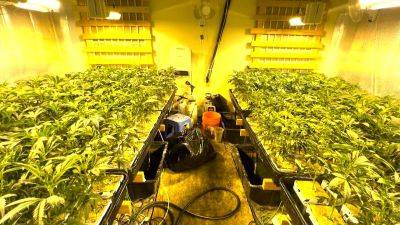Finland will soon bury nuclear waste in a geological tomb that’s built to last for 100,000 years
Finland is on the cusp of burying spent nuclear fuel in the world's first geological tomb, where it will be stored for 100,000 years.
The pioneering project has been hailed as both a watershed moment for the long-term sustainability of nuclear energy and "a model for the entire world."
At some point either next year or in early 2026, highly radioactive spent nuclear fuel will be packed in watertight canisters and deposited into bedrock more than 400 meters below the forests of southwest Finland.
The durable copper canisters will be isolated, separated from humans and kept underground for thousands of years.
"Onkalo," which is the trademark name of the long-term disposal facility, is the Finnish word for a small cave or pit. It is an apt name for the repository, which sits atop a warren of tunnels and is situated next to three nuclear reactors on the island of Olkiluoto, approximately 240 kilometers from the capital of Helsinki.
Established in 1995, Posiva is tasked with the responsibility of handling the final disposal of spent nuclear fuel rods at Onkalo. The Finnish company is jointly owned by nuclear power company TVO and utility Fortum.
"Basically, the Onkalo project is that we are building an encapsulation plant and disposal facility for spent fuel. And it's not temporary, it's for good," Pasi Tuohimaa, head of communications for Posiva, told CNBC via videoconference.
Tuohimaa said the first-of-its-kind geological disposal facility had received a lot of interest from industry players, citing what he described as a nuclear "renaissance" in recent years and an energy crisis that gripped Europe and parts of Asia from mid-2021 through to late 2022.
"Having a solution for the final disposal of spent fuel was like the missing







